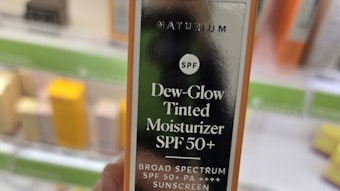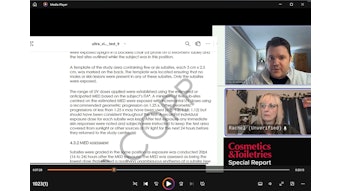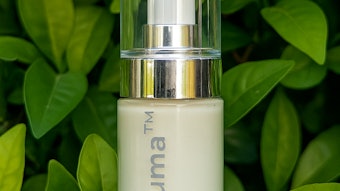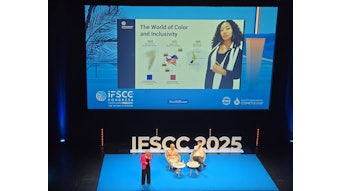
This primer outlines tips and tricks to help product developers master formulating with ZnO. Topics range from the impact of formula formats, importance of processing and influence of particle choice, to pH optimization and stability.
This article is only available to registered users.
Log In to View the Full Article
This primer outlines tips and tricks to help product developers master formulating with ZnO. Topics range from the impact of formula formats, importance of processing and influence of particle choice, to pH optimization and stability.
As consumer awareness of the need for effective sun protection continues to rise, demand for high-performance sunscreens has grown beyond mere SPF claims. Today’s sunscreens, daily moisturizers, foundations and other beauty and personal care products are increasingly expected to offer broad-spectrum protection and maintain superior aesthetic appeal.
However, formulators face significant challenges in meeting these evolving expectations, particularly when navigating complex and often divergent global regulations. Sunscreens are amongst the most heavily regulated personal care products, and ensuring compliance while delivering exceptional sensory performance has become a delicate balancing act.
As a globally approved inorganic UV filter, zinc oxide (ZnO) offers photostable broad-spectrum protection that is suitable for a wide range of formulations. However, ZnO can present unique formulation challenges, including pH stability or phase migration. These can influence the formulation strategies required to create sun products that provide both effective protection and an elegant user experience, meeting the needs of modern consumers and global regulatory standards alike.
ZnO offers broad-spectrum protection against both UVA and UVB rays, reflecting, scattering and absorbing UV rays within the 340-400 nm range of the electromagnetic spectrum. ZnO is photostable, which means it does not degrade when exposed to sunlight, and thus provides longer-lasting SPF and UVA protection.
However, working with ZnO in formulation is far from straightforward. Its physical nature, combined with dispersibility challenges, can significantly impact texture, efficacy and user appeal. These impacts pose unique hurdles for formulators aiming to deliver high-performance sunscreens.
In response, the present article outlines tips and tricks to help product developers master formulating with ZnO. Topics range from the impact of formula formats, importance of processing and influence of particle choice, to pH optimization and stability.
Impact of Formula Formats
The desired format for a formulation containing ZnO can influence not only ingredient selection, but also the processing techniques employed to develop a stable formulation with optimized aesthetics. In addition, the uniform distribution of ZnO is crucial to help reduce white cast on the skin, minimize agglomeration of the active ingredient, enhance SPF and UVAPF, and improve stability.
High ZnO levels: When formulating with high levels of ZnO, the high solids loading and density of ZnO can result in dense emulsion droplets, which can increase the likelihood of instability. To avoid this, formulators may increase the level of emulsifiers, suspension agents, thickening ingredients or rheology modifiers used in the formulation. Nonionic thickeners such as xanthan gum or a blend of polyacrylate-13, polyisobutene and polysorbate 20 can help to alleviate issues with instability.
O/W emulsions: While oil-in-water (o/w) emulsions may be favored for their light, non-greasy skin feel, the inclusion of ZnO can result in issues with the pH of the formulation. In these instances, ionic emulsifiers are not recommended, as they can further impact pH and contribute to significant instability.
Instead, it is advisable to use nonionic emulsifiers such as:
- C14-22 Alcohols (and) C12-20 Alkyl Glucoside,
- Cetearyl Alcohol (and) Coco-Glucoside,
- Glyceryl Stearate (and) Polyglyceryl-6 Palmitate/Succinate (and) Cetearyl Alcohol,
- Polyglyceryl-4 Laurate/Succinate (and) Water (Aqua),
- Steareth-2 and
- Steareth-21.
These emulsifiers have been shown to support the creation of stable emulsions without interacting with the ZnO, whereas ionic emulsifiers can interact with the ZnO to form a cottage cheese-like texture (see Figure 1).
W/O emulsions: Water-in-oil (w/o) emulsions containing ZnO typically have a richer texture and may offer better water resistance than other formulation types. However, they can encounter thickening over time. Polymeric emulsifiers such as the following are capable of producing low viscosity sunscreens, even with high levels of ZnO; recommended levels for these types of emulsifiers range from 1-3 %w/w.
Recommended polymeric emulsifiers include:
- PEG-30 Dipolyhydroxystearate,
- Polyglyceryl-3 Diisostearate and
- Tri(Polyglyceryl-3/Lauryl) Hydrogenated Trilinoleate.
Anhydrous formulas: Finally, there are anhydrous formulations, which generally do not encounter pH or thickening issues. If created in a stick form, such formulas’ wax content can provide a pleasant skin feel during and after application to the skin. Anhydrous systems, however, can encounter sedimentation over time, as ZnO is a relatively dense material.
To avoid this, it is recommended to include dispersants or suspending agents in the formulation to avoid agglomeration and ensure consistent SPF performance; though the ingredient selection may depend on the specific type of ZnO being incorporated.
Importance of Processing
As stated, achieving the even dispersion of ZnO is essential to preventing agglomeration and ensuring consistent skin protection. As such, formulators must consider whether to use ZnO in its powder form or as a pre-dispersed dispersion, as this decision directly affects processing techniques and formulation stability.
Powder ZnO and pre-dispersion: If using a powder form of ZnO in a formulation, it can be beneficial to create a pre-dispersion prior to incorporation. This helps to ensure the powder is well-dispersed and prevents agglomeration in the formulation. ZnO can be added to either the water phase or oil phase of the formulation, depending on the coating applied to the particles.
In both cases, a successful pre-dispersion can be created by combining the carrier fluid with dispersants before adding the ZnO powder with high shear of around 5,000-10,000 rpm. It is recommended to include 0.1% w/w polyhydroxystearic acid for every 1% w/w of ZnO used in a formulation to facilitate the even dispersion of ZnO.
Wetting agents, such as glycerin or caprylyl glycol, can aid dispersion while high shear mixing and dispersing equipment can help to break up any particles formed and distribute ZnO uniformly throughout the formulation. Figure 2 shows the benefits of adding a dispersant. Here, the emulsion on the left contains no dispersant and agglomeration can be observed. The image on the right shows the same ZnOa emulsion containing a dispersant, where no apparent agglomeration is observed.
Pre-dispersed ZnO: Alternatively, a ZnO dispersion can be added directly to the formulation without the need for pre-mixing.
Figure 3 illustrates the formulation process that can be used to incorporate ZnO powder into formulations, while Figure 4 highlights the addition of a pre-dispersed ZnO, which requires fewer steps.
Effects of Particle Choice
The particle size and coating or surface treatment of ZnO can significantly impact the resulting aesthetics of the finished formulation, such as white cast on the skin. For example, novel particle shapes and optimized sizes can deliver improved transparency. One particular range of micron-sized ZnO was developed employing a unique platelet-shaped morphology derived from primary crystalsa.1 (Additional information on primary/aggregate particle sizes is available upon request.)
Figure 5 depicts how this stacked platelet structure allows diffuse reflectance between the platelets, reducing the amount of direct reflectance and thus the whitening on skin, compared with how conventional spherical ZnO reflects visible light directly, appearing white on skin.
Surface treatments: ZnO particles can be surface treated with materials like silica, silane, alumina or stearic acid to enhance their dispersion. Such treatments use electrostatic hindrance to keep ZnO particles separate and prevent agglomeration. Coatings can also minimize ion migration and, since they heavily influence compatibility with other ingredients in the formulation, they open up a broader selection of suitable emollients to formulators.
Surface coatings may significantly impact viscosity as well, and since viscosity issues are common when formulating with ZnO, understanding their impact – as well as that of emollients – is crucial; particularly for meeting requirements of low viscosity and high SPF sunscreens.
Figure 6 illustrates how the use of different emollients in combination with the aforementioned platelet-shaped ZnO having different coatings can affect viscosity. Here, the stearic acid-coated ZnO consistently delivered a lower viscosity than the silane-coated or uncoated ZnO. It is interesting to note that with the platelet structure ZnO, any polarity emollient can be used.
When using ZnO in powder form, again, it is important to optimize the choice of emollients since they can have a significant impact on the viscosity of the pre-dispersion, which in turn can influence the aesthetics of the finished formulation. A more fluid, spreadable base is achievable with a lower viscosity pre-dispersion, and effectively dispersing ZnO can help to reduce any white cast on the skin following application of the sunscreen.
ZnO Migration and Optimizing pH
When formulating o/w emulsions containing ZnO, one of the most important factors to balance is pH.2 ZnO is hydrophilic in nature and as a result, tends to migrate to the water phase of a formulation. Ideally, the pH of the formulation should be maintained between 7.0 and 7.5.
This is because at pH levels below 7.0, divalent zinc ions can form and will migrate into the water phase, causing the dissolution of ZnO and resulting in agglomeration and unstable formulations. Conversely, if the pH is above 7.5, alkaline zinc complexes may form, which can also lead to instability in formulations.
ZnO powders can have a greater tendency to migrate, though this can be reduced through the choice of coating or by using dispersants to create an in situ coating, as discussed earlier.
The pH of the formulation should be adjusted initially to pH 7.0-7.5 using citric acid or lactic acid; 2% w/w of a 50% w/w concentration of citric acid is recommended to help maintain the pH within this range. To monitor ZnO migration, it is important to check the initial pH of the formulation and how this changes over time. Chelating agents, such as disodium EDTA at levels between 0.1-0.2% w/w, can be added to formulations to help reduce the migration of zinc ions and help stabilize the formulation.
Acrylate polymers may adversely react with zinc ions, as the zinc can interfere with the polymer structure and lead to instability in the formulation. When high levels of acrylate-based ingredients cause instability, the sunscreen formula can, again, appear cottage-cheese like; the way it does with incompatible ionic emulsifiers, as previously discussed.
How to Check Formulation Stability
During formulation processing, it is crucial to check the product’s visual aspect, as this can help to identify any issues. Three highly recommended methods for evaluating sunscreens are shown in Figure 7. These include the spatula test, microscopy and the use of drawdown cards.
Spatula test: The spatula test involves spreading the sunscreen formulation onto the end of a spatula. A smooth, shiny appearance indicates a good emulsion has been created. Meanwhile, a dull, grainy appearance could suggest the ZnO has begun to agglomerate, and thus the sunscreen may not meet expectations for SPF performance. The spatula test can be used to assess the stability of both the pre-dispersion mixture and the finished formulation to identify potential agglomeration.
Microscopy: Similarly, microscopy can allow for early detection of issues such as agglomeration, allowing for a more detailed view of the quality of an emulsion.
Drawdown cards: Finally, drawdown cards with a black background can be used to highlight any agglomeration. A grainy appearance on the drawdown card could be an early indicator of instability, agglomeration or reaction between ZnO and the dispersant used.
Each of these methods can be used to detect potential instability during the creation of sunscreens containing ZnO. They can save time and effort when trying to optimize SPF efficacy and sensory experience, providing valuable insight into whether any issues with the formulation may impact the desired performance of the finished formulation.
Conclusion
Formulating sunscreens with ZnO presents distinct challenges that require careful attention to ingredient compatibility, processing techniques and dispersion methods. Achieving uniform ZnO dispersion is critical for maintaining both the stability and efficacy of the final product, minimizing the risk of agglomeration and ensuring consistent UV protection. Practical tools such as spatula tests, microscopy and drawdown cards can offer early insights into potential instability, helping to streamline formulation development.
The thoughtful selection of emollients, dispersants and particle coatings plays a pivotal role in enhancing both the performance and aesthetic appeal of ZnO-based sunscreens. By minimizing agglomeration and optimizing skin feel, formulators can create products that not only meet global regulatory requirements, but also offer consumers a smooth, comfortable application experience.
Continued innovation in particle size optimization, surface coating technologies and formulation techniques is helping to overcome the historical challenges associated with ZnO. These advancements pave the way for the next generation of mineral sunscreens, offering broad spectrum protection with improved sensory performance and minimal white cast.
As consumer demand for safe, effective and aesthetically pleasing sun care grows, ZnO remains a compelling and reliable choice for delivering high-quality UV protection.
Footnotes
a Solaveil MZP3 (INCI: Zinc Oxide) is a part of the MicNo range of platelet-based products by Croda Beauty.
References
- Hine, H. (2023, Jul). A new particle design for mineral sunscreens. Pharma & Cosm Rev. 48(7).
- Nayyir, A. and McNeil, K. (2013, Nov). Formulating broad spectrum UV protection products. Personal Care.










